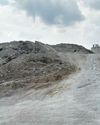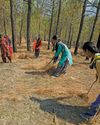
IN MARCH 2023, the Union Ministry of Jal Shakti released the “Water Bodies First Census Report”. Since 1986, India has conducted a census of minor irrigation every five years, exclusively on rural waterbodies. The “Water Bodies First Census Report” is a broader version of the sixth minor irrigation census and covers all types of rural as well as urban waterbodies—such as those used for irrigation, industry, pisciculture, drinking, recreation, religion, groundwater recharge, conservation—natural and human-made, and owned by the government and private individuals. It has also quantified the encroachment of waterbodies created under various water conservation programmes.
The findings show that there are 2,424,540 waterbodies in the country, of which 97 per cent are in rural areas. Of the total waterbodies, 59.5 per cent are ponds, 15.7 per cent are tanks, 12.1 per cent are reservoirs, and the remaining 12.7 per cent are structures created under water conservation schemes (see ‘Graphic clarity’). The share of privately owned waterbodies is 55.2 per cent while the rest are government-owned. Less than 2 per cent of the waterbodies have been encroached upon.
Though the census is by far the widest such survey, experts doubt if it can be called national in scope. India has a total of 7,933 towns and 0.64 million villages, as per Census 2011, but the waterbodies census covers only 3,009 towns and 0.36 million villages—less than half of the total. Does this mean that half the country’s towns and villages house its 2,424,540 waterbodies? Also, since 97 per cent of the waterbodies are in rural areas, does this mean that just 3 per cent of the waterbodies are located in the 3,009 towns?
Esta historia es de la edición May 01, 2023 de Down To Earth.
Comience su prueba gratuita de Magzter GOLD de 7 días para acceder a miles de historias premium seleccionadas y a más de 9,000 revistas y periódicos.
Ya eres suscriptor ? Conectar
Esta historia es de la edición May 01, 2023 de Down To Earth.
Comience su prueba gratuita de Magzter GOLD de 7 días para acceder a miles de historias premium seleccionadas y a más de 9,000 revistas y periódicos.
Ya eres suscriptor? Conectar

THE CIRCULARITY ARGUMENT
A circular economy can help India achieve its developmental aspirations while following the low-carbon pathway. It will also help address the challenges of waste management, pollution and overexploitation of natural resources. Industries are already innovating to reuse high-volume wastes and have shown that the transition can usher in both environmental and financial windfalls

Banking on flawed drug voluntary licences
The Medicines Patent Pool is pushing for more VLs, but its bad deal with Novartis on a cancer drug shows the pitfalls

Lasting solutions
For the first time, the UN has recognised the role of indigenous communities in tackling aridity. A repository of traditional knowledge India has the wherewithal to lead the way

IMD at 150
India's journey into modern weather forecasting took a decisive turn 150 years ago with the establishment of India Meteorological Department during the British rule. The agency has come a long way since then, shaping the way the country predicts and responds to its diverse climate challenges

Every drop counts
In drought-prone Marathwada region, 14 villages have managed to counter water shortage by budgeting the resource

Threat to survival
Hollongapar Gibbon Sanctuary in Assam faces ecological challenges as railway electrification and hydrocarbon exploration endanger its fragile biodiversity

'Migration is going to be a battlefield'
AMITAV GHOSH is one of the foremost chroniclers of our times. His literary sojourn includes writings on topics that range from languages to climate change to human lives. His latest book, Wild Fictions, brings some of his works on these issues under one title. In a conversation with RAJAT GHAI, Ghosh shares his views on the future of human movement. Excerpts:

Face of future
California wildfires confirm forest fires are intensifying in a hotter world, emitting substantial amounts of greenhouse gases and reinforcing global warming

Friends of the forest
Residents of 30 villages in Uttarakhand establish a model for public participation in saving forests from wildfires

Climate-crazy playbook
Just hours after his second (and final) term began on January 20, US President Donald Trump unleashed 46 presidential actions. Several of these are centred on the US' climate commitments, energy transition, migration and trade policies, and are likely to have negative global implications